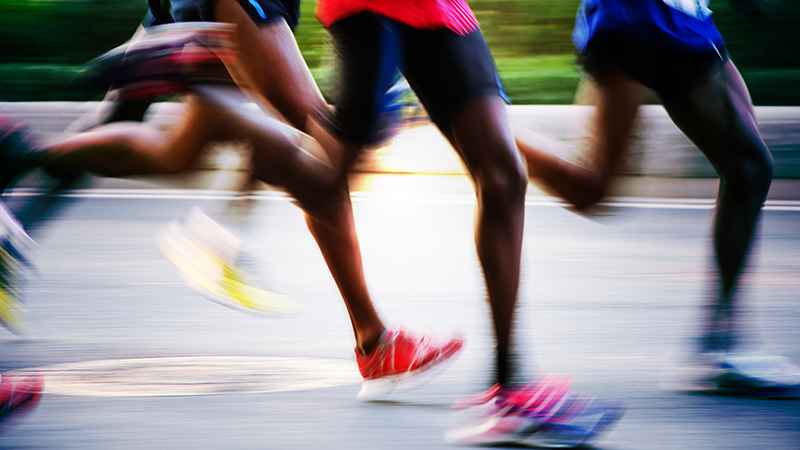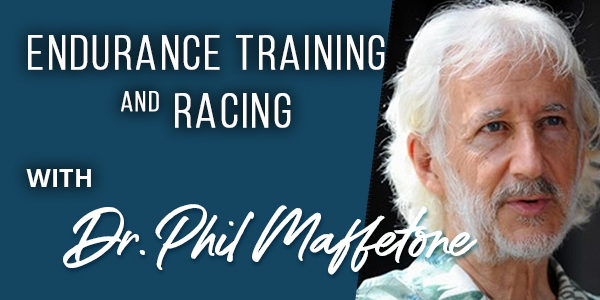
Five simple factors could propel the right runner to the first sub-two-hour marathon.
Since my first article on the 1:59 marathon in 1997, men’s record times have come down almost 4 minutes. Now with the record at 2:02:57 since the writing of my book 1:59 we’re waiting for the next shoe to drop, so to speak.
There is no “if” to this. When it does happened it will be because an athlete dared break with tradition to step up and fine-tune their training and racing. Shattering the most amazing barrier in sports today will elevate this runner to a status among the greatest athletes of all time. Most now understand 1:59 will happen relatively soon.
While there are no real improvements in road surfaces, nutrient formulations, training methods, equipment — primarily shoes — or other factors that have improved performances in other sports in recent years, marathoners have been basically left on their own to let the natural progress of human performance take place. While a handful of experts actually believe the history of human performance has plateaued, it hasn’t, unless humans are in the midst of extinction and we don’t yet know it.
In a new study currently in review, colleagues Paul Laursen, Rita Malcata and Ivan Rivera, and I show that marathon times for elite men and women over a recent 10-year period of major World Marathon events, including Boston, Berlin, Chicago, London and New York, improved by an average of 1 percent per year. While this average is not applicable to any one race or individual, it does indicate we’re ready for another world-record. Those months prior to the Olympics may be delaying the 1:59 phenomenon because runners avoid the faster venues in place of the generally slower Olympic races, and in some countries an additional qualifying marathon.
Women should also not be left out of this discussion. Paula Radcliff’s marathon record of 2:15:25 is also seemingly untouchable, but the next women’s record is similarly in sight. The same factors discussed here would apply for breaking this record as well.
From my perspective, social-stressors are still impairing natural human progress in the marathon. It could be said that the necessary improvements in race paces required for 1:59 are being hindered by one primary factor — tradition. But the details involve physiology. In addition to the variables of race-day emotions, weather and finances, perhaps we can narrow it down to five factors that could possibly help propel a runner beyond the two-hour threshold. These five remaining factors appear most significant to produce a sub-two-hour marathon, especially on courses with advantages like Berlin or London, which have mostly produced the fastest races in recent years:
Glycogen
While glycogen reserves that provide athletes the energy to maintain 4:34 per mile paces have been studied, experimented with and talked about for decades, the mark is virtually missed when it comes to improving the important factor of fueling marathon efforts. Carbohydrate from junk foods are still the tradition in sports. No secret race carbohydrate formulas have or will show up in the runners’ bottles, no special pre- or race-day meals are forthcoming. The best way to conserve glycogen is to use a better form of energy for a two-hour effort: fat.
Imagine being able to run a marathon with much less liquid to gulp down. In addition to breaking stride at the aid stations, it can cause intestinal distress, which can slow you down. Reductions in race-day carbohydrate requirements can be accomplished by training your body to use more fat with less emphasis on carbs. Burning body fat is the best way to conserve glycogen stores. It’s the alternative to stuffing in more carbohydrates before and during the race.
Fat is such a super fuel that even at a 4:34 pace, the body can still use relatively high amounts of it while conserving glycogen stores. But in order to achieve this metabolic goal, several things are necessary. First, training programs must develop the aerobic system, improving the function and speed of the body’s slow-twitch muscles, where fat is burned. This must be regularly measured, not assumed, by monitoring one’s sub-max speed. Progressing to a sub-max pace of about 4:50 per mile would be a key goal, and indicate that fat-burning has significantly improved, glycogen stores during a race will be conserved and the aerobic muscle fibers will not only support the physical body to maintain a great gait and running economy, but help power glycogen-fueled fast-twitch fibers toward the end of the race.
A key factor in building an efficient fat-burning machine is to avoid refined carbs (aka, junk food) in the daily diet and make up the caloric difference with healthy fat. Simple.
Pacing
There’s another important race-day factor: go out faster than 4:34 per mile early in the race (or surge with faster paces) and all bets are off regarding glycogen conservation. Pacing is a secret weapon.
The ideal pace strategy begins before the race by developing a great aerobic engine that burns fat for high energy while conserving glycogen. As a conscious strategy involving a relatively consistent heart rate and or pace, the fastest marathoners usually have fewer changes in speed throughout an event. This strategy enlists the brain’s natural ability to optimally control the physical and biochemical body. It’s auto-pilot.
Despite the well-known facts about pacing, even elites sometimes start too fast or indulge in an inappropriate surge, which is usually an emotion-charged action. This can reduce fat-burning and tap into glycogen stores, ultimately slowing the overall pace. Others are just not adequately prepared to maintain an optimal pace.
Altitude: 3-Steps
Tradition dictates that great athletes live at high-altitude locations. However, the best way to build a 1:59 marathoner’s metabolism is to 1) live at high altitude, which increases natural EPO to raise red blood cells for better oxygenation; 2) train at lower altitudes, which enables faster sub-max training paces; and 3) race at the lowest altitude, where oxygen uptake is greatest. If high-altitude living is not possible, sleeping in a hypobaric chamber can accomplish the same.
Foot Function
The bottom line with shoes is that, as the only real equipment marathoners use, they have not improved race times. Most likely, they have prevented a 1:59 marathon from already happening. Almost all the greatest marathoners in history grew up barefoot to develop their natural return-energy mechanisms used to convert gravitational forces into additional race energy — the secret energy weapon of optimal foot function. There is one primary reason the best athletes don’t run barefoot — money. Shoe contracts are usually lucrative enough to overcome logic.
The V-Factor
The best and most likely non-human factor for marathoners will come not with shoes but the venue. In particular, the course surface. Building a one-mile loop, for example, would be a unique, first-of-its-kind venue. Less like city streets and more like those fast 400-meter ovals, where most other running records reside. Such a surface would speed us to a 1:59 marathon sooner. No doubt this is already being discussed, even planned, but is still no more than rumored. When a venue like this appears, we’ll have separate official track and road marathon records.
Combining all these potential factors to improve marathon time is obviously the best strategy for breaking the 1:59 marathon barrier.
Buy 1:59 On Amazon








